- Joined
- Jan 27, 2009
- Messages
- 18,870
- Reaction score
- 12,114
- Golden Thread
- 1
- Location
- South East Tennessee on Ga, Ala line
- 🥇 Banner finds
- 1
- Detector(s) used
- Tesoro Conquistador freq shift
Fisher F75
Garrett AT-Pro
Garet carrot
Neodymium magnets
5' Probe
- Primary Interest:
- All Treasure Hunting
We started with a bucket of clay off a non navigable water way where we found pottery sherds. Got 5 gallons of it and about 2 gallons of little mussels shells to mix in with it.
Got out some ancient mortars and pestles and ground up the shell.
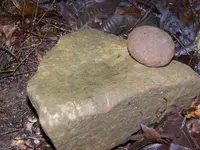
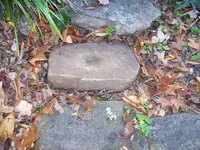
We went from examples that Keberg and Lewis studies in Tennessee. We looked at the styles made and weaving and incising patterns.
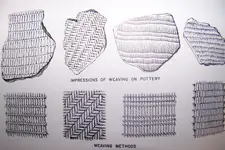
There was 4 of us and we mixed the clay and shell together and added water and dumped it on a tarp and started trying to make some vessels and items. We found the coil method worked best then smooth them down with Popsicle sticks and drops of water. We wrapped a hemp cord on spoons and tried paddling it. Many items would fail. We incised some with sticks and rolled a dry corn cob on others to crate a pattern. Not the best in the world but here is what the looked like.
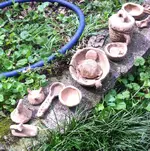
Here us a rough attempt at a pipe with a corn cob in the bowl and a stick in for the stem.
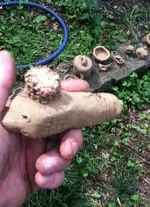
Let the pottery dry and took brush left over from the storms and made a little fire pit. Put the pottery in it and covered it with coals. Left it all night adding coals and keeping it red hot.
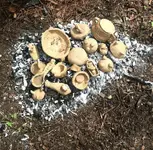
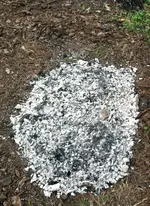
This is what we made. I can see that it took skill. I did not have that but they did ok. Our imaginations took over and we did not follow the designs perfectly but we had fun.It seems some people are more creative than others when it comes to pottery. I am sure this was true with ancient peoples. So here is new ancient pottery made the ancient way with what was available to them.Hope you enjoyed and Happy Hunting !
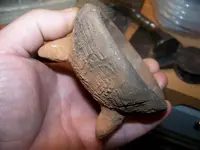
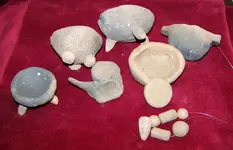
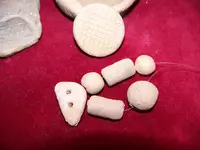
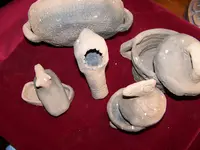
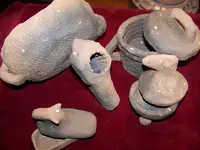
Got out some ancient mortars and pestles and ground up the shell.


We went from examples that Keberg and Lewis studies in Tennessee. We looked at the styles made and weaving and incising patterns.

There was 4 of us and we mixed the clay and shell together and added water and dumped it on a tarp and started trying to make some vessels and items. We found the coil method worked best then smooth them down with Popsicle sticks and drops of water. We wrapped a hemp cord on spoons and tried paddling it. Many items would fail. We incised some with sticks and rolled a dry corn cob on others to crate a pattern. Not the best in the world but here is what the looked like.

Here us a rough attempt at a pipe with a corn cob in the bowl and a stick in for the stem.

Let the pottery dry and took brush left over from the storms and made a little fire pit. Put the pottery in it and covered it with coals. Left it all night adding coals and keeping it red hot.


This is what we made. I can see that it took skill. I did not have that but they did ok. Our imaginations took over and we did not follow the designs perfectly but we had fun.It seems some people are more creative than others when it comes to pottery. I am sure this was true with ancient peoples. So here is new ancient pottery made the ancient way with what was available to them.Hope you enjoyed and Happy Hunting !





Upvote
0




